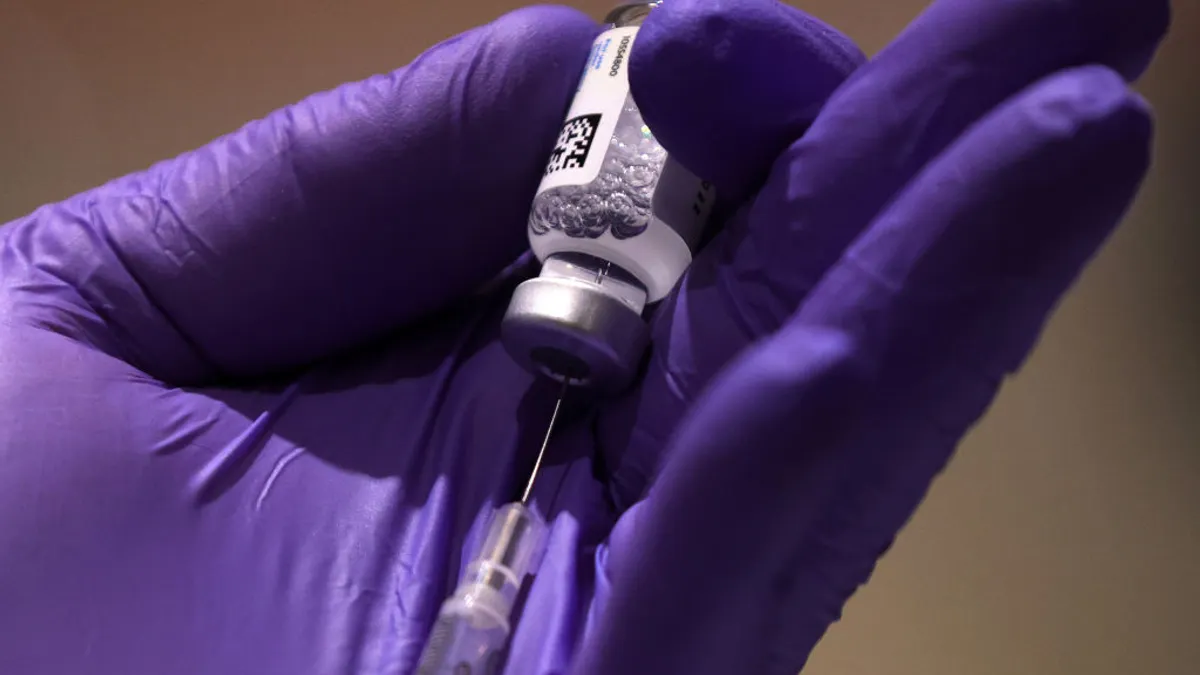The magic wand experiment has long been a tempting exercise for business leaders. As a question that asks you to imagine fixing a major problem with the simple whoosh of your imaginary wand, management strategists have championed it as a thought exercise that can help leaders bolster creativity, zero in on goals, problem solve ever-present challenges, or generate some other kind of a-ha moment that could transform your company or career.
And when we reached out to our community of life sciences execs and posed the magic wand question, half responded with wishful thinking about various aspects of clinical trials.
Pharma R&D remains one of the costliest and riskiest aspects of the business. Although the hotly debated issue of how much it costs to bring a new drug to market varies wildly, analysis from Brookings last year estimated that all phases of R&D ultimately amount to $1.3 billion to $2.5 billion per drug. There’s also evidence that these costs have been on the rise.
But the drug development process is where a bit of magic can happen for patients. For example, efforts to boost clinical trial diversity are being driven by the belief that this will ultimately create better outcomes for a broader group of patients.
Here’s what else pharma leaders would change about clinical trials if they could use a little magic.
Make site activation quicker
“We have motivated patients, families, investigators and personnel at clinical trial sites. But the growth in clinical trial bureaucracy over the years has increased the time to get a study started; the timeline has been stretched because of the increased number of local review committees, as well as other checks and balances. It all evolved for very good reason — to ensure the safety of patients. But it has slowed things down. So, with the magic wand, I would shorten the time to get a site activated from six to nine months to two weeks.”
Dr. Kurt Gunter, senior vice president, chief medical officer, Inozyme Pharma
Improve predictive tools
“If I had a magic wand, I would wish for reliable, predictive treatment efficacy on known human disease targets. The drug approval process is complex and time consuming. Unknown pathophysiology makes target identification difficult; one size does not fit all. Advances in clinical phenotyping will address these challenges as will the increased use of AI and leveraging new technologies.”
Kevin Duffy, chief commercial officer, KPS Life
Speed drug development through tech
“I would cast a spell to drive ‘techquity alliance’ and empower healthcare to be accessible to all by leveraging AI/(machine learning) algorithms to analyze data powered by strategic partners to speed up drug development. Overall, my goal would be to create a healthcare system that is accessible, affordable and effective, and that puts the needs of patients first.”
MaryAnne Rizk, president, Rizk Management Consulting, and a PharmaVoice 100
Apply AI to all phases of development
“If I had a magic wand, I would accelerate the use of AI to drive better decisions across molecule to market continuum. We will discover newer and safer molecules, accelerate clinical trials with better patient recruitment and site selection and improve commercialization by helping physicians identify the right therapies for their patients.”
Nagaraja Srivatsan, founder, Vidya Seva, and a PharmaVoice 100
Truly improve trial diversity

“The lack of diversity in clinical trials is a major obstacle to understanding the safety and efficacy of treatments across population subgroups. Improving diversity in clinical trial teams, investigators and trial design is critical to advancing health equity and expanding access to care for all patients suffering with kidney diseases.”
Dr. Charlotte Jones-Burton, senior vice president, product development and strategy, Chinook Therapeutics
Harmonize regulatory bodies in rare diseases
“I would improve how pharmaceutical regulatory agencies in the U.S. and EU work together on rare disease medicines. It is possible to undergo a dual review process with the agencies at the same time, but many companies cannot because both agencies must agree to take up the joint review.
I would like to harmonize the (FDA) and the (EMA) in a way that facilitates the recognition of one agency’s drug approval by the other in an expedited process, allowing rare disease therapeutics to be easily accessible to people with rare diseases worldwide.”
Richard Pascoe, CEO, Zevra Therapeutics
Share regulatory information
“As a heavily regulated industry, all companies developing therapeutics would benefit if we had an accessible online forum where companies could share their experiences and learnings from regulatory interactions with different agencies. Rather than trying to guess and interpret what may be happening in the regulatory process, a database organized by therapeutic area, geographic region and stage of development could be a valuable tool to gain insight from what others have experienced in similar situations.”
Nevan Charles Elam, CEO, founder, Rezolute
Improve collaboration around gene therapies

“True collaboration across the gene therapy space to support caregivers, patients and healthcare professionals throughout the disease continuum. I believe an open model of sharing data, clinical outcomes and regulatory experiences would help advance therapies more efficiently to get these much-needed treatments to patients and their families.”
Carolyn Sasse, incoming development head for cell and gene therapy, Astellas Pharma



















